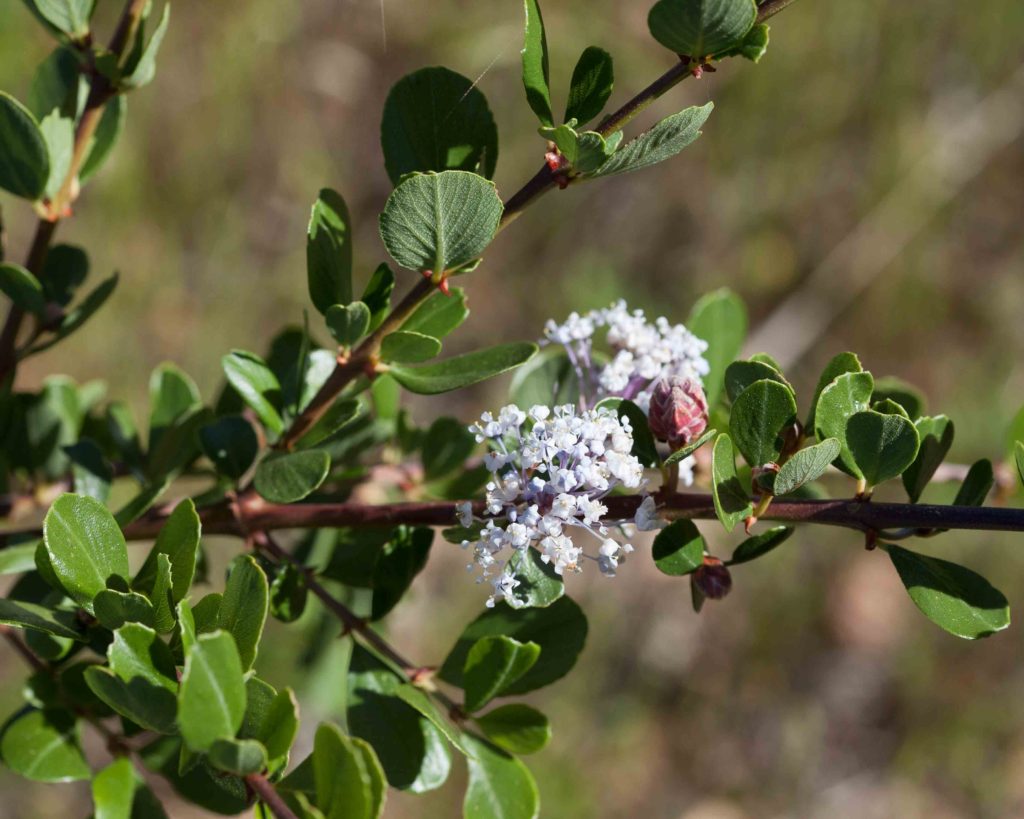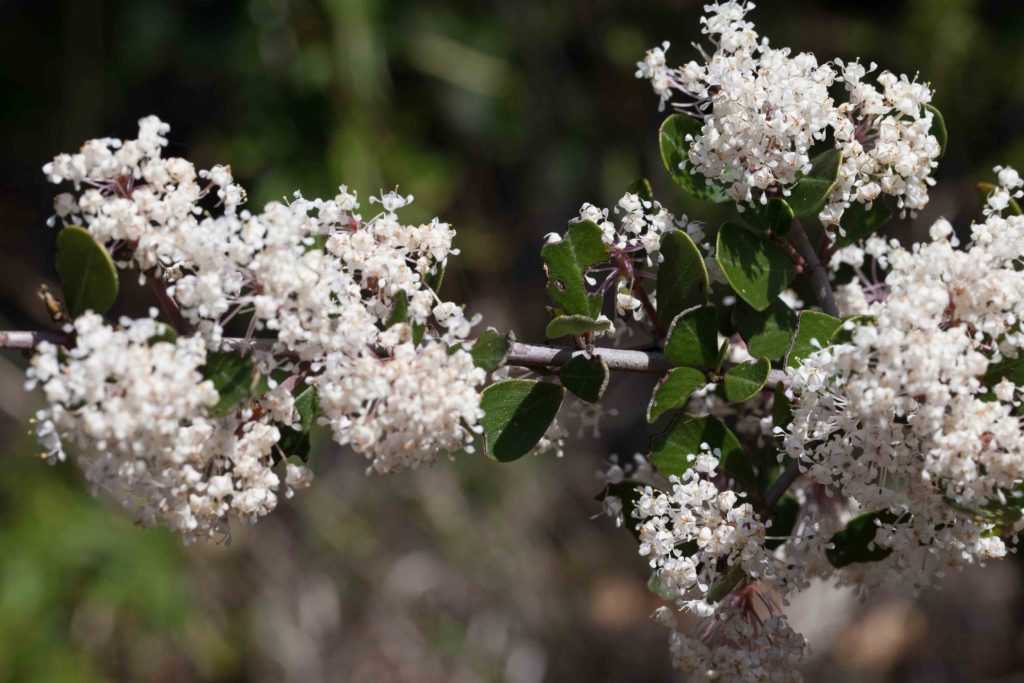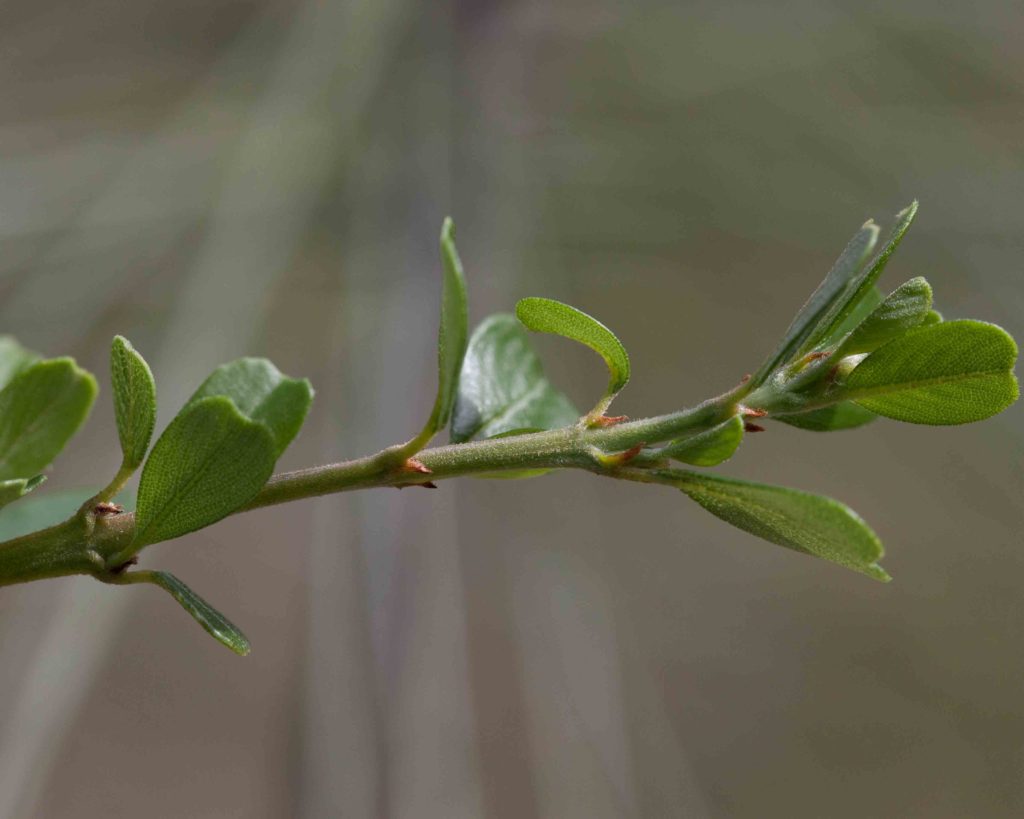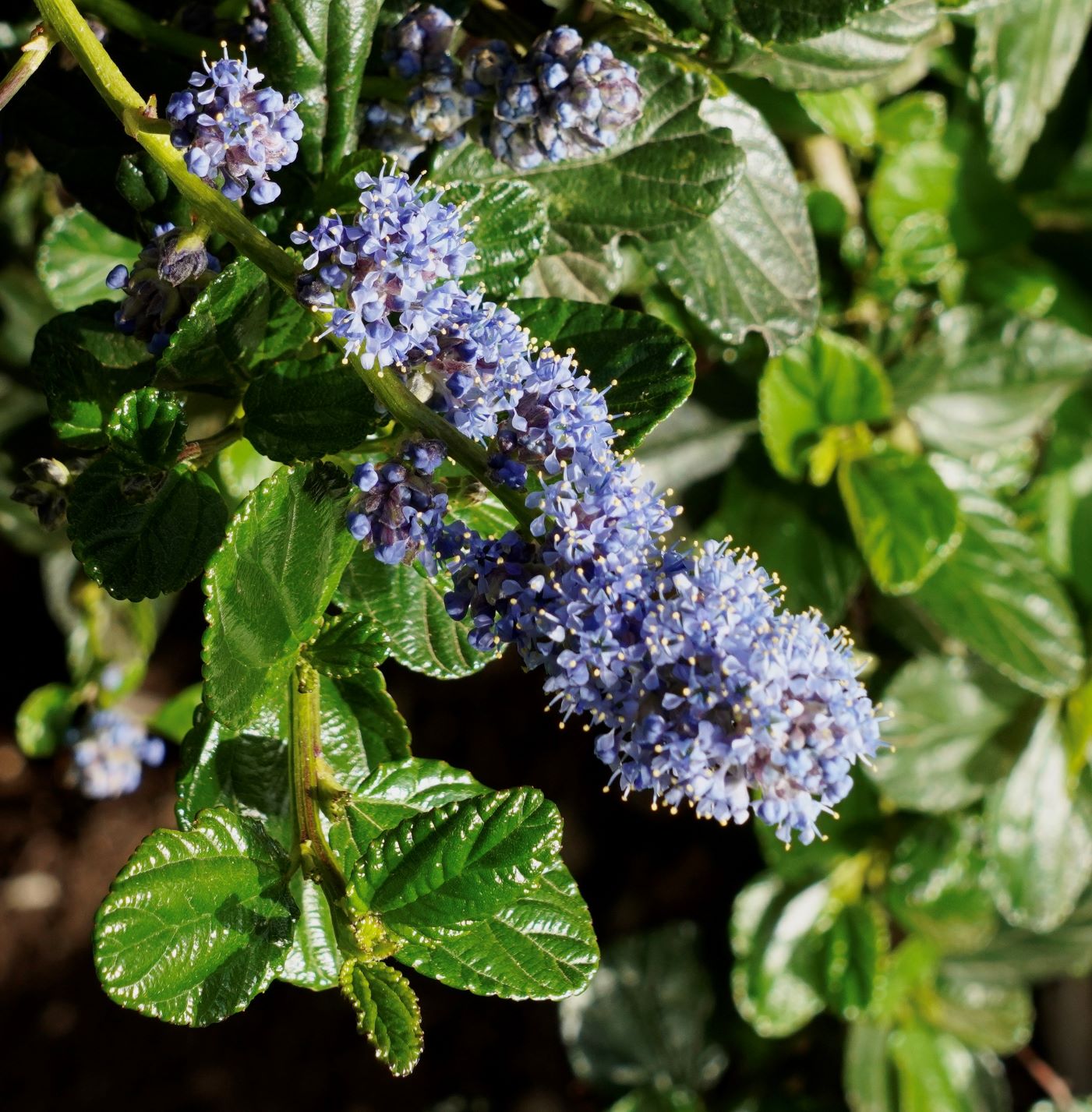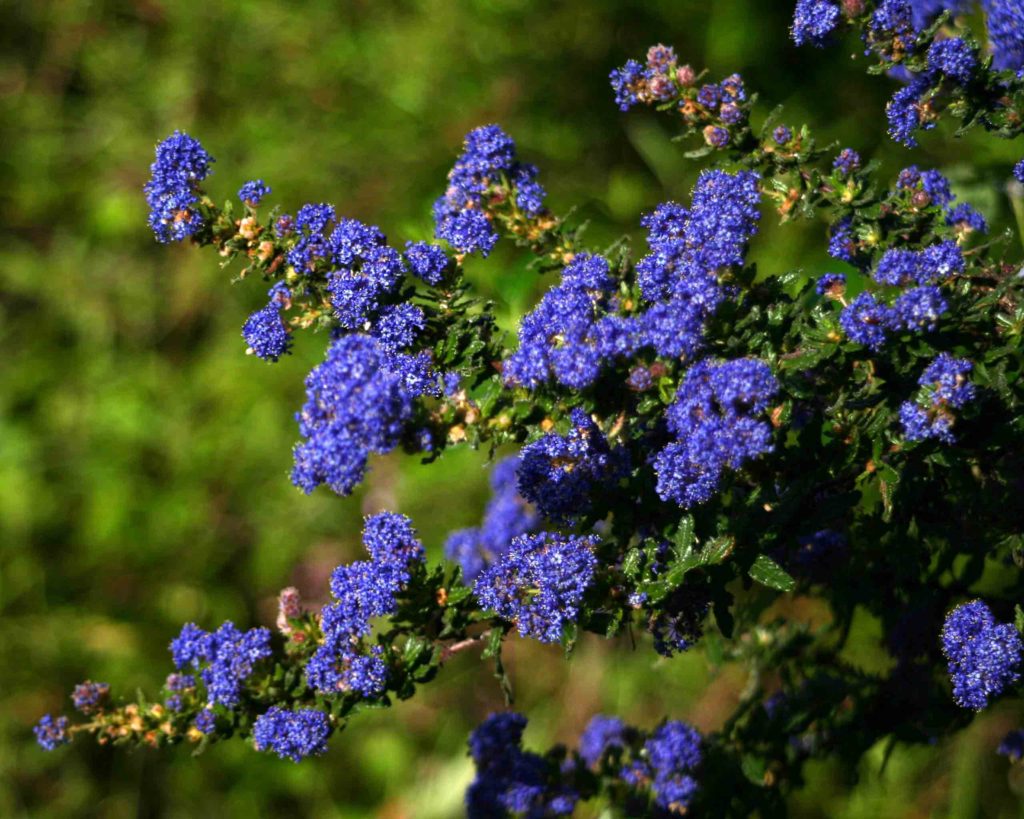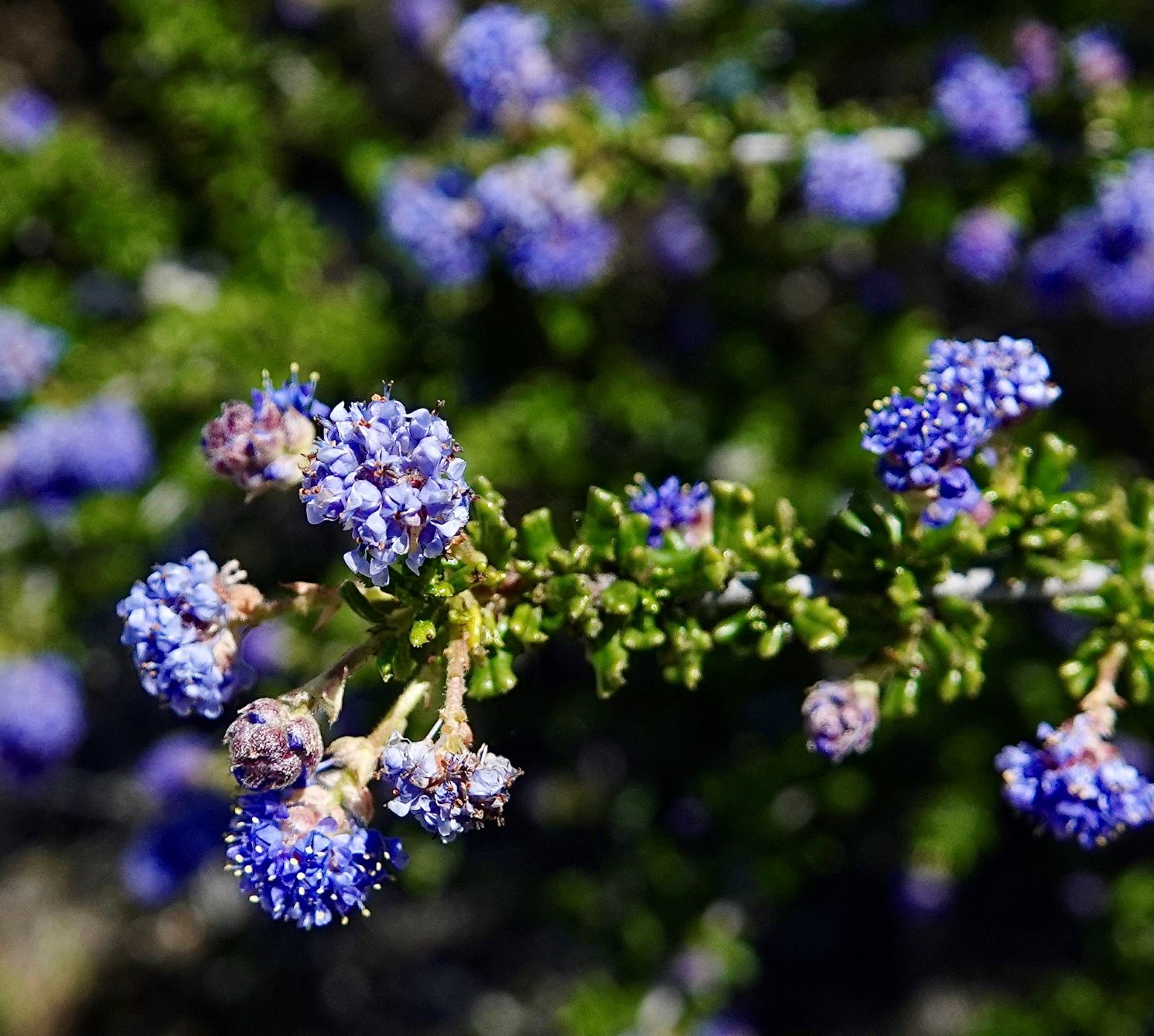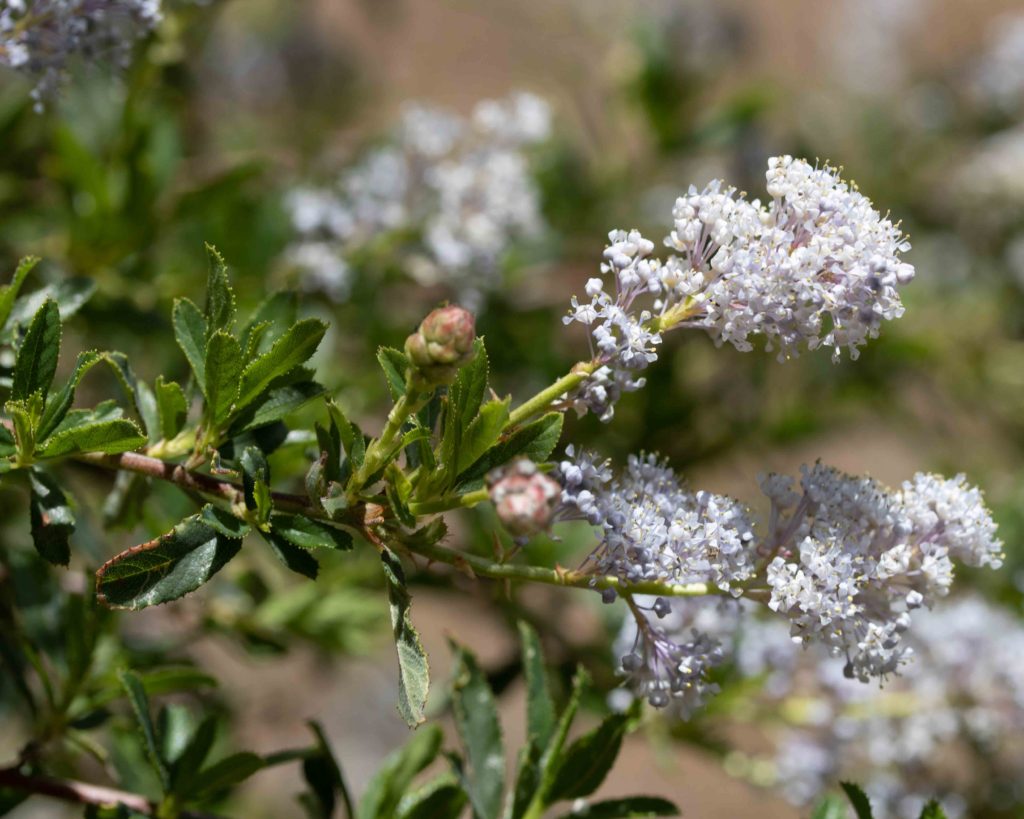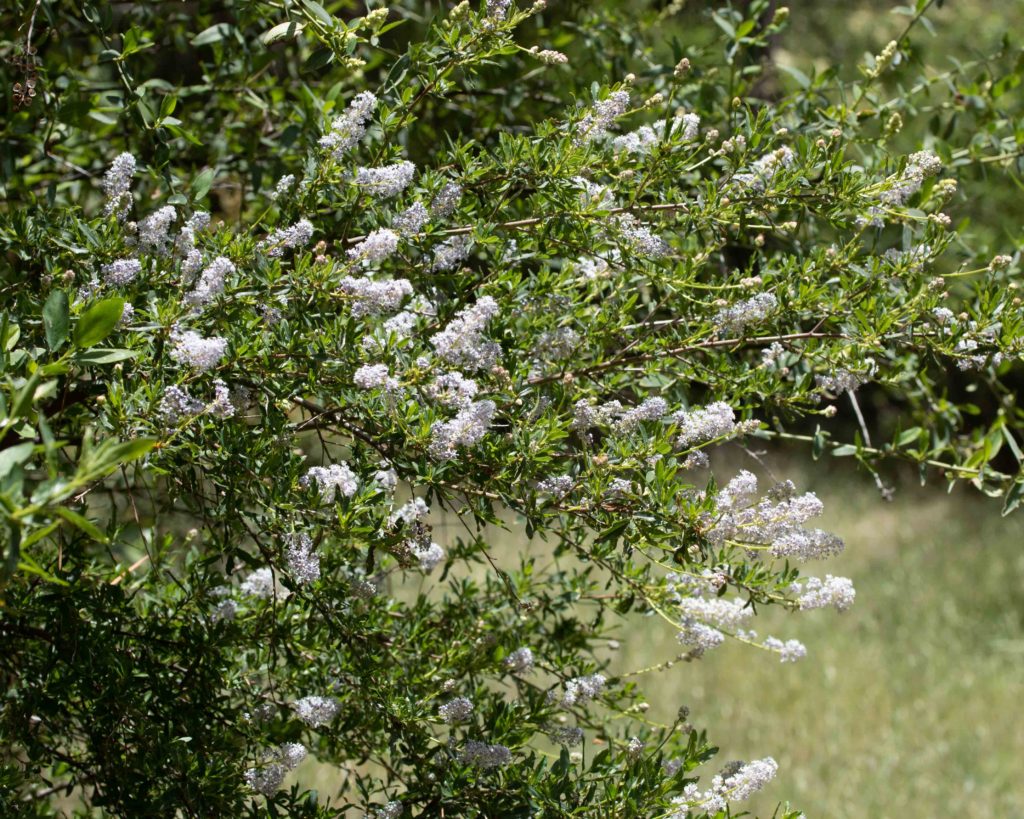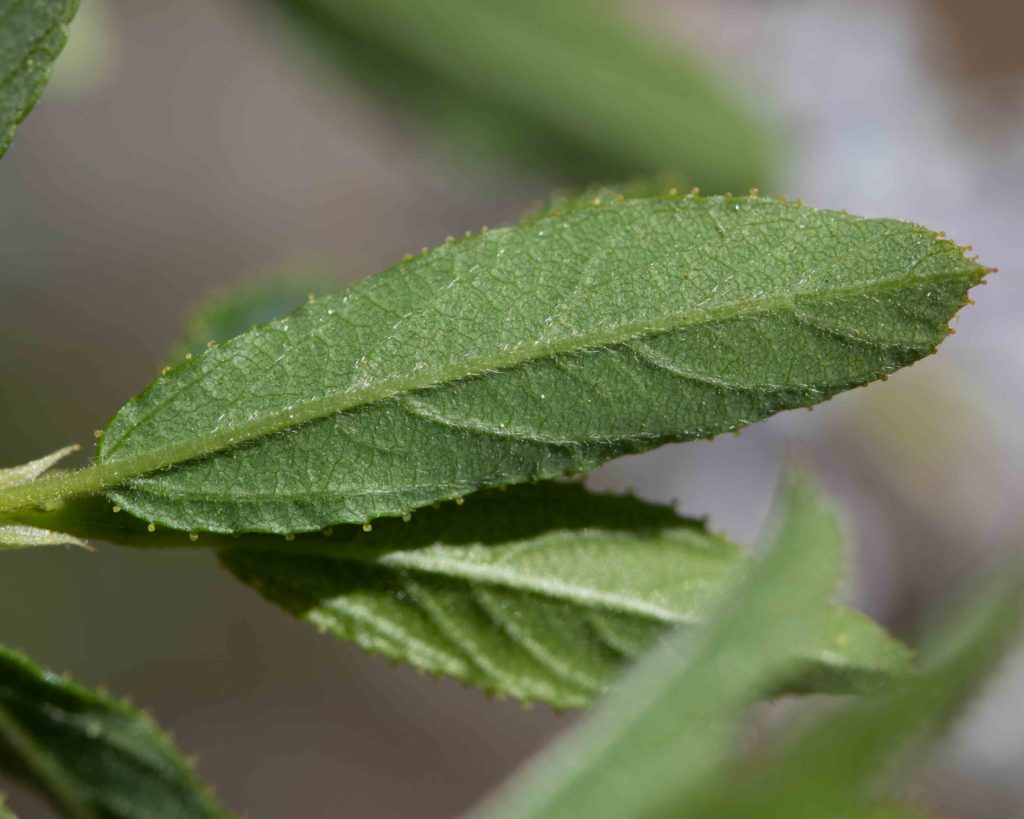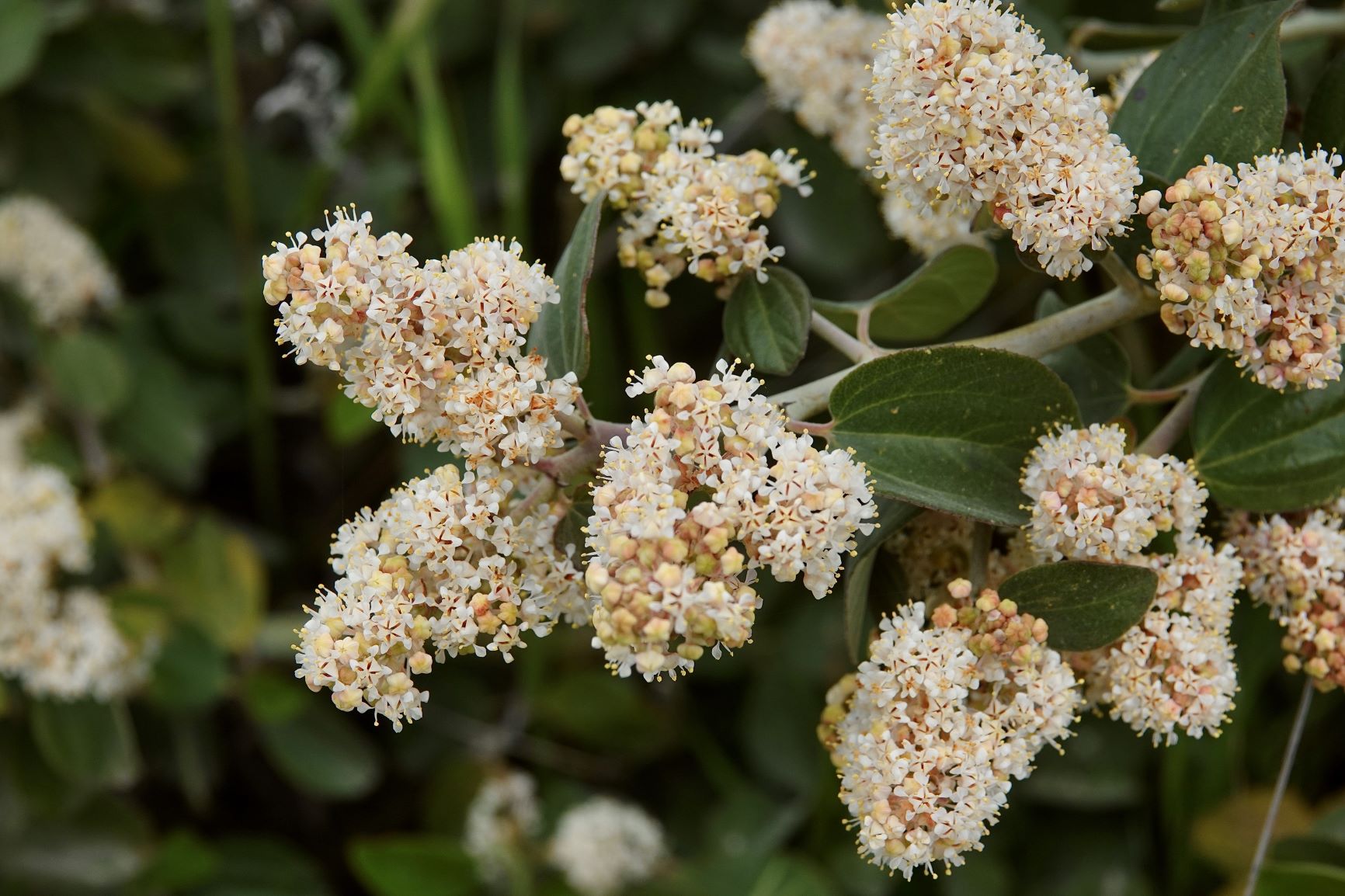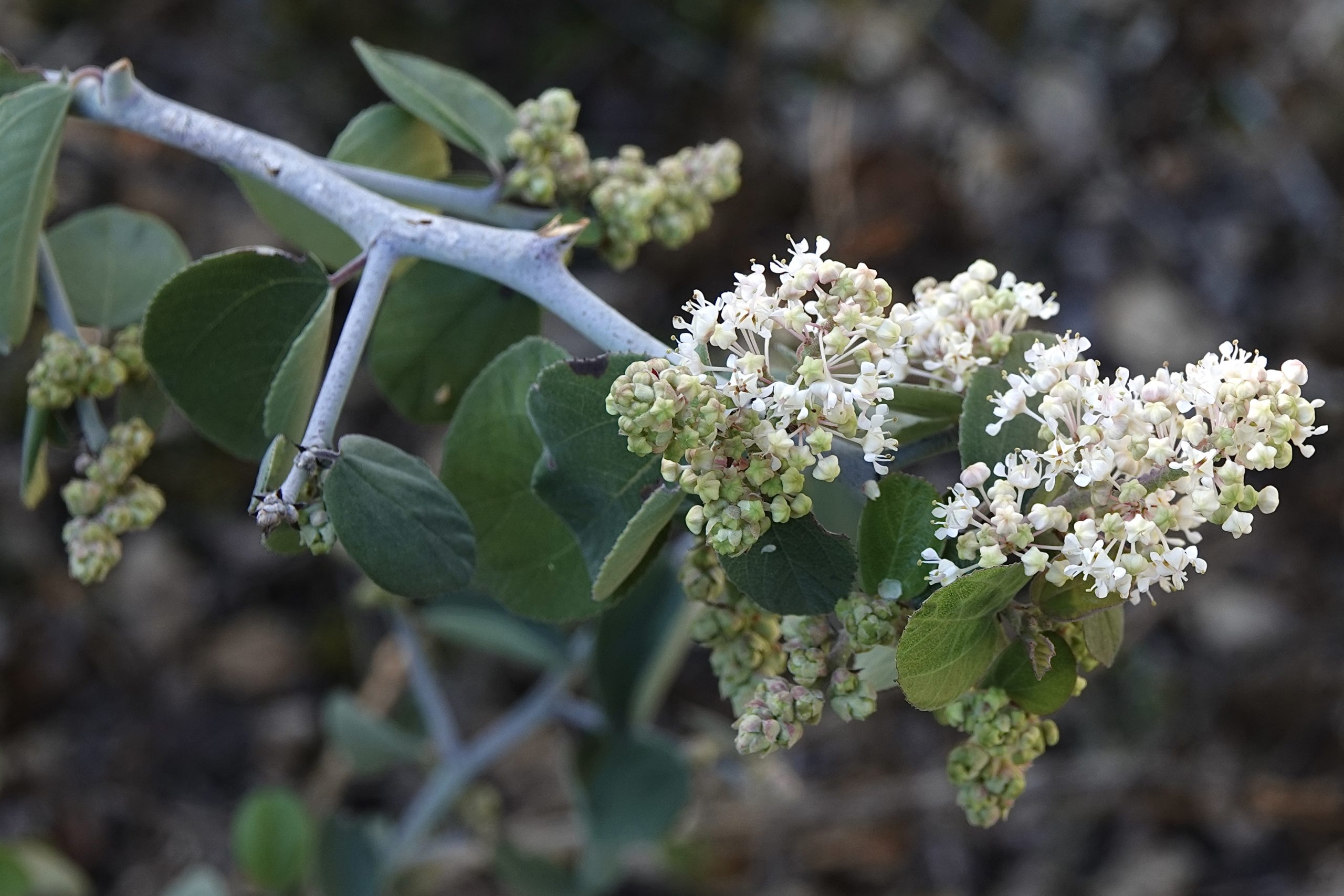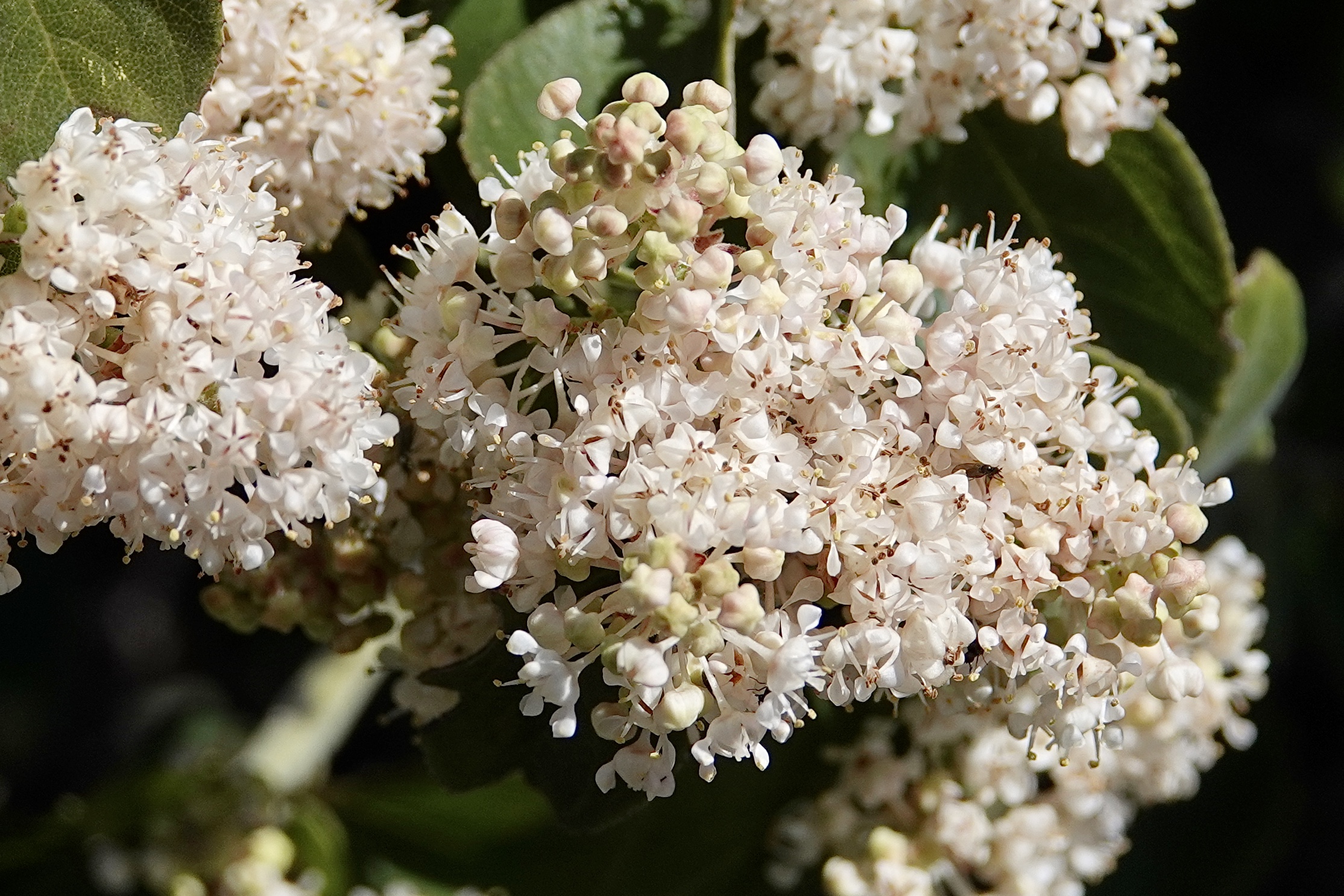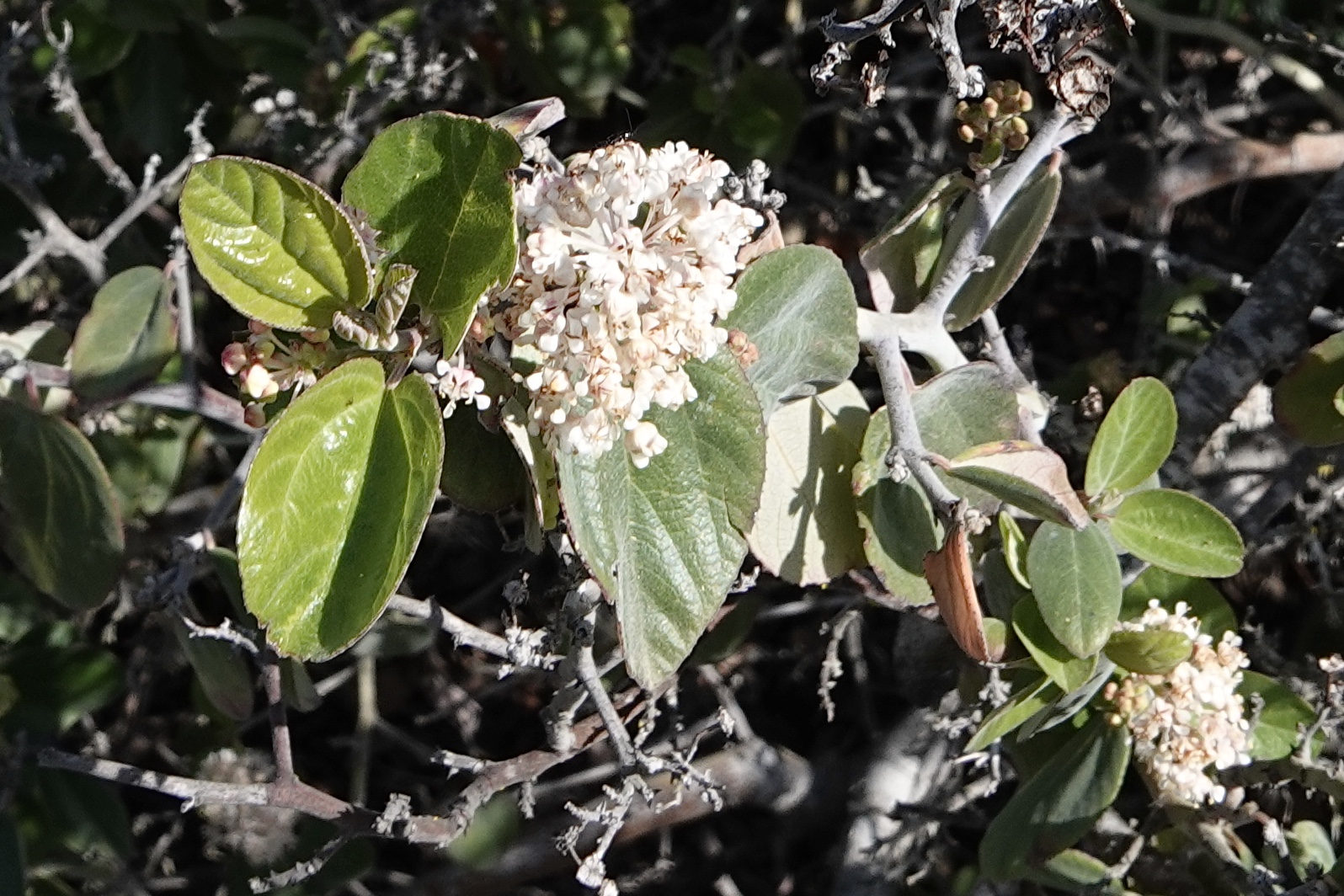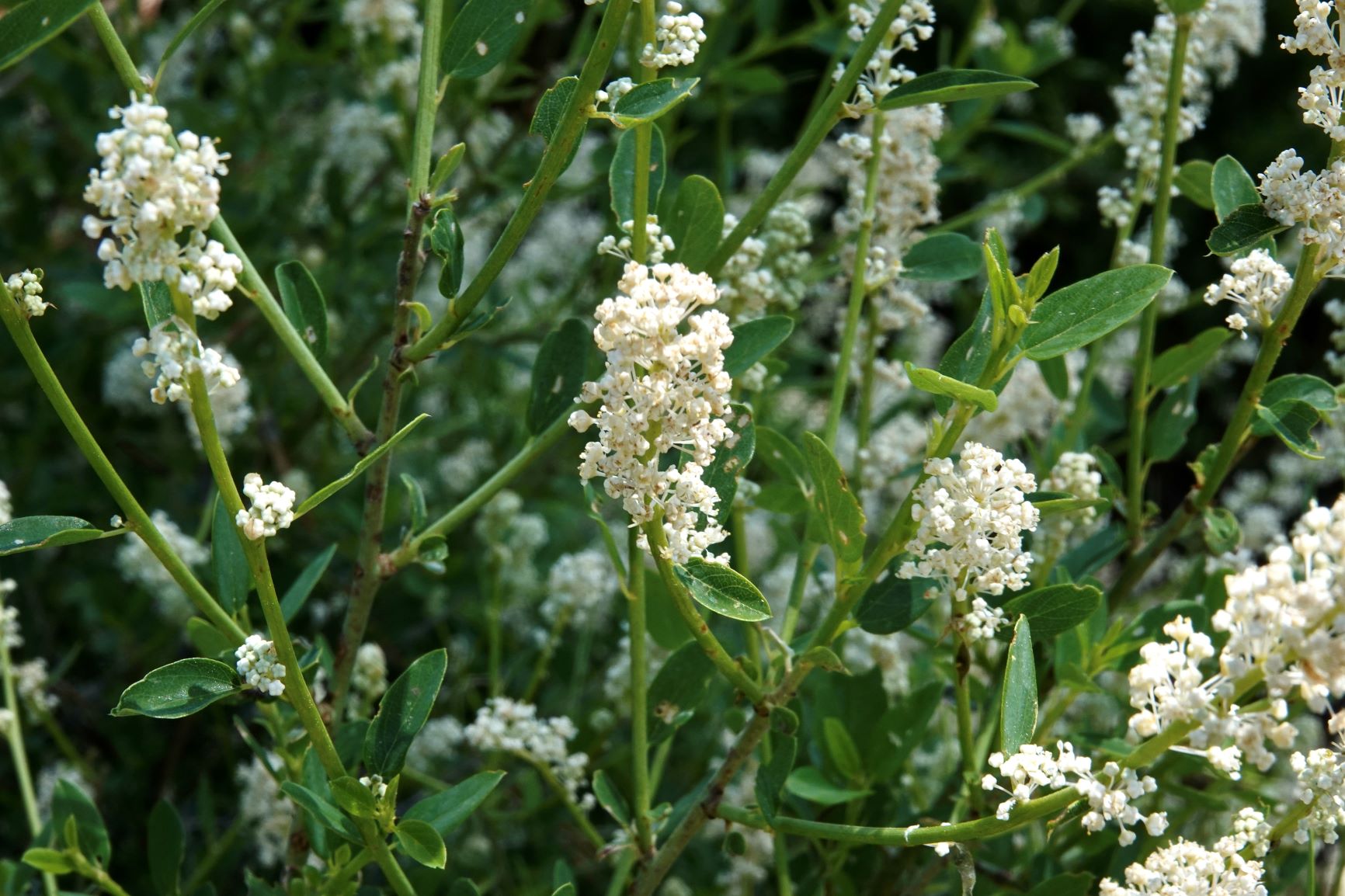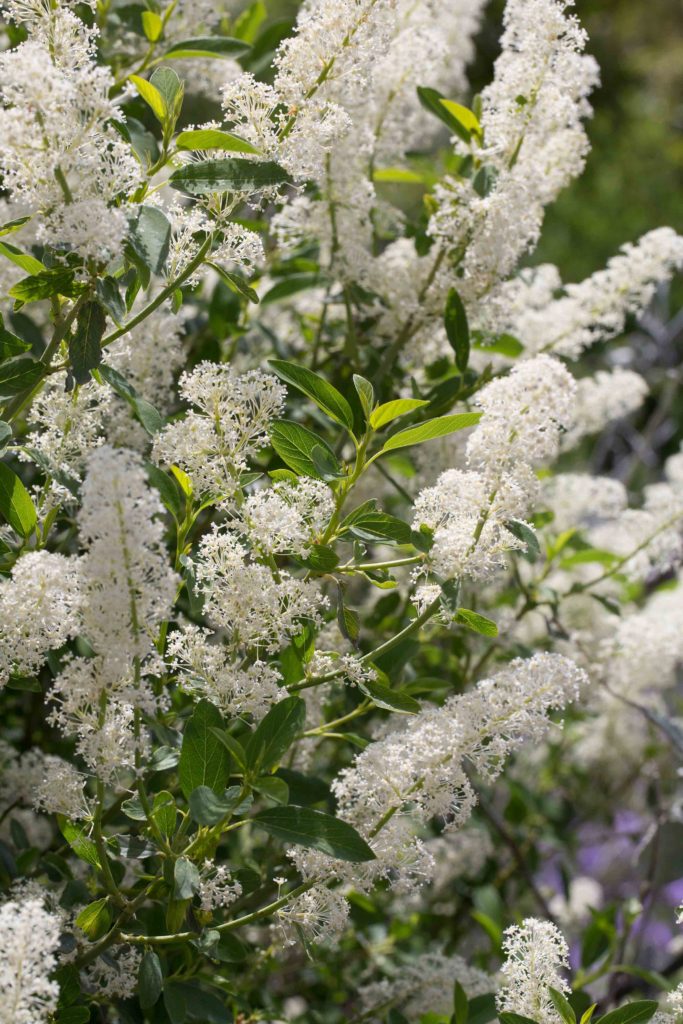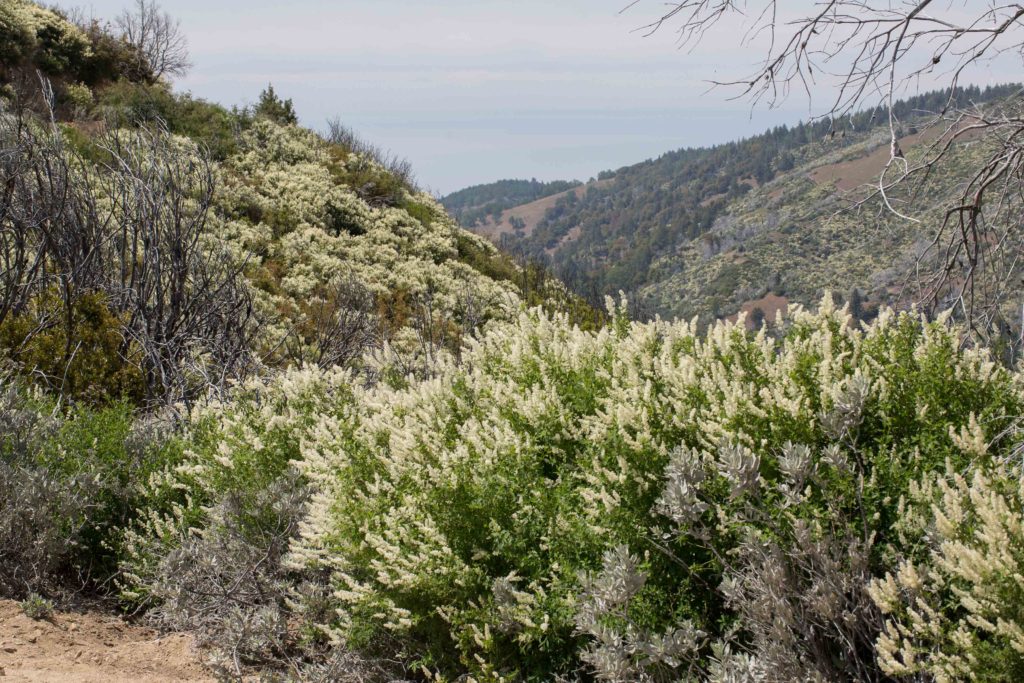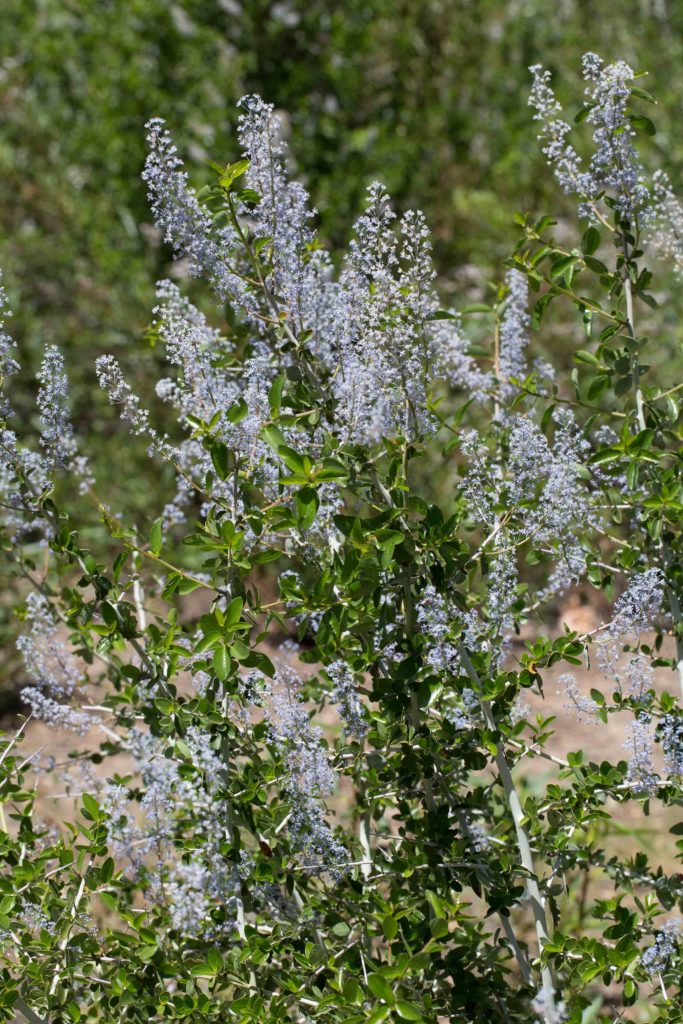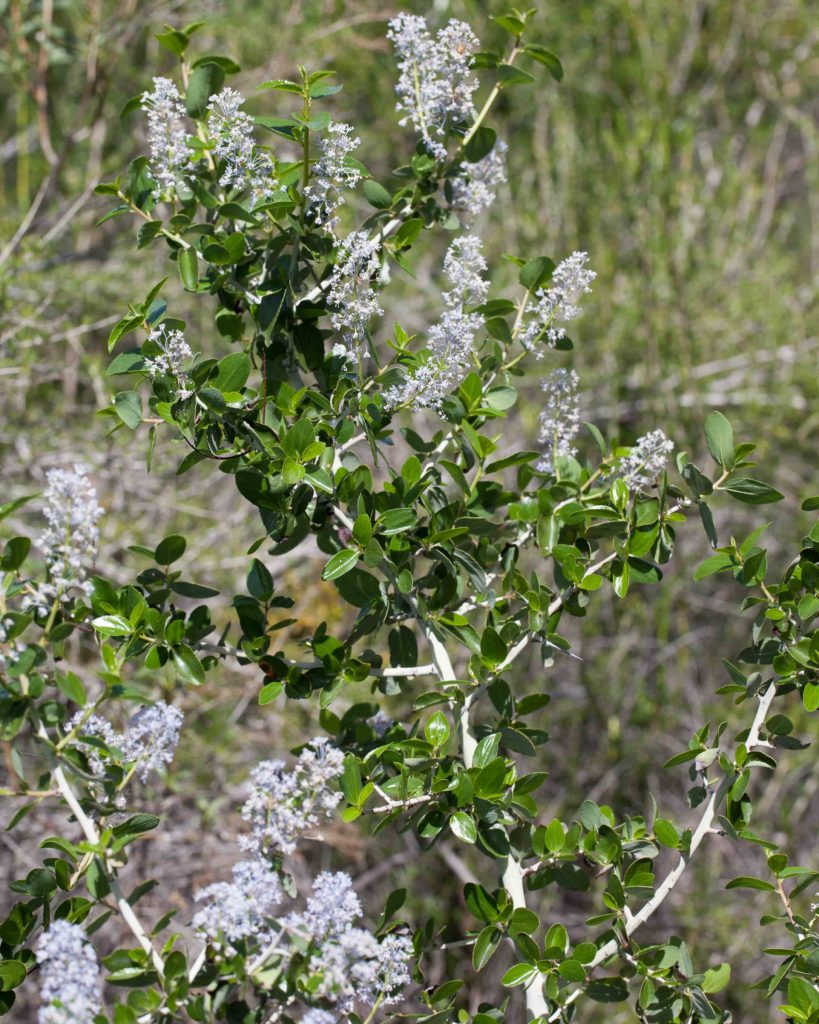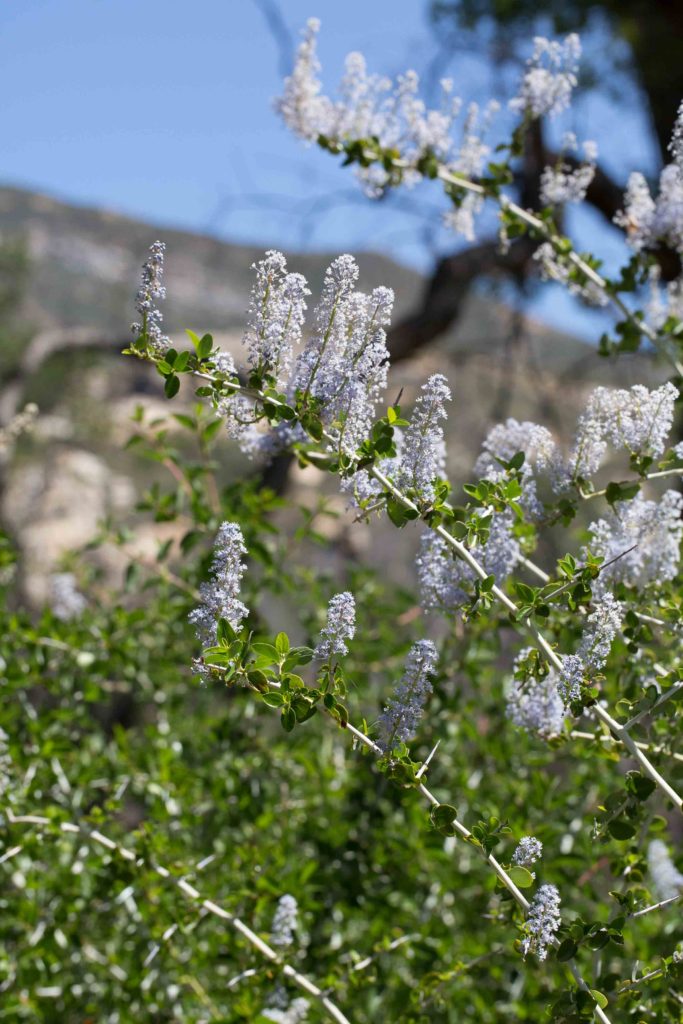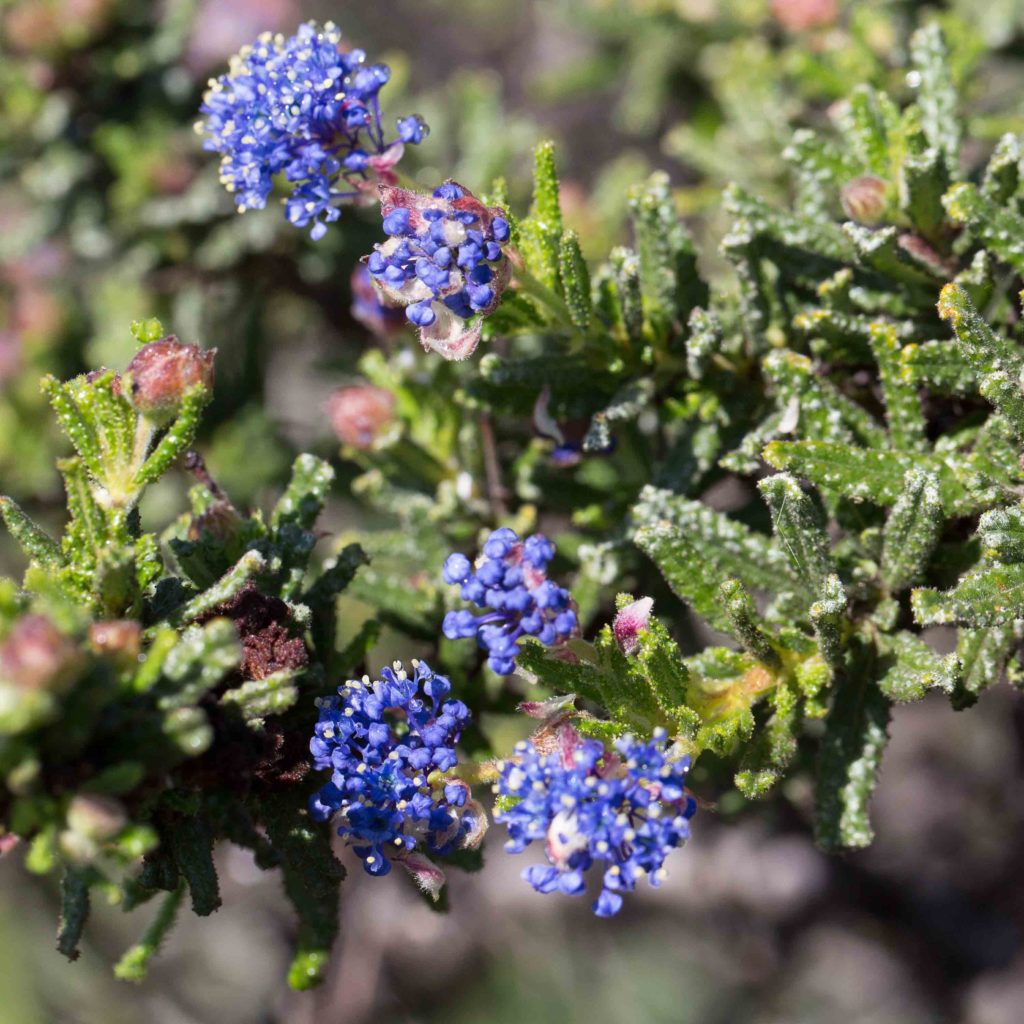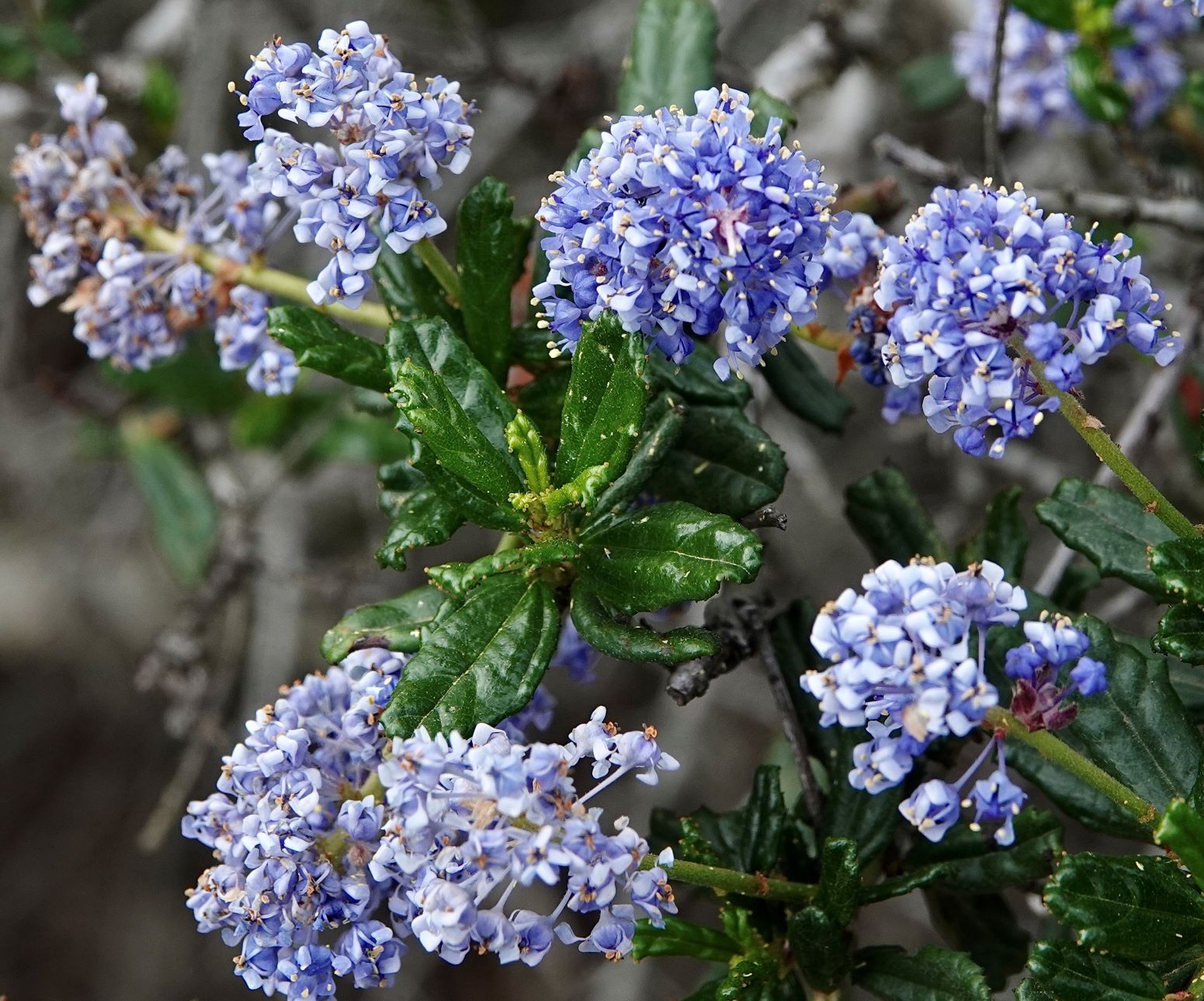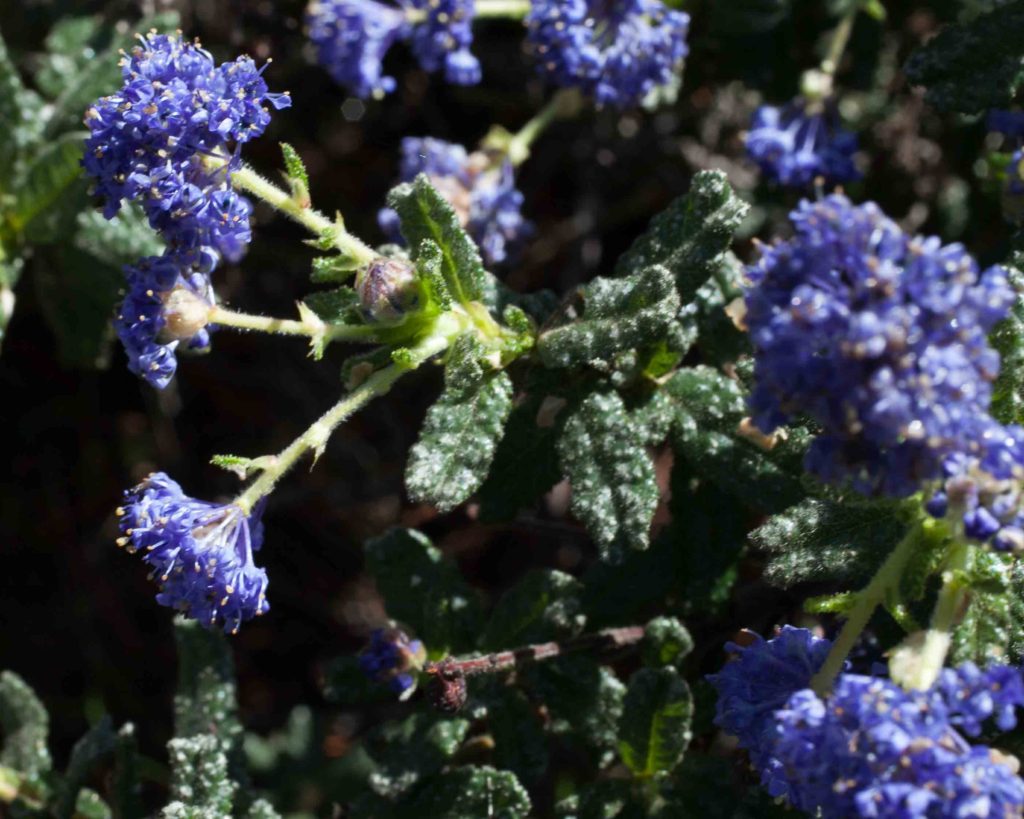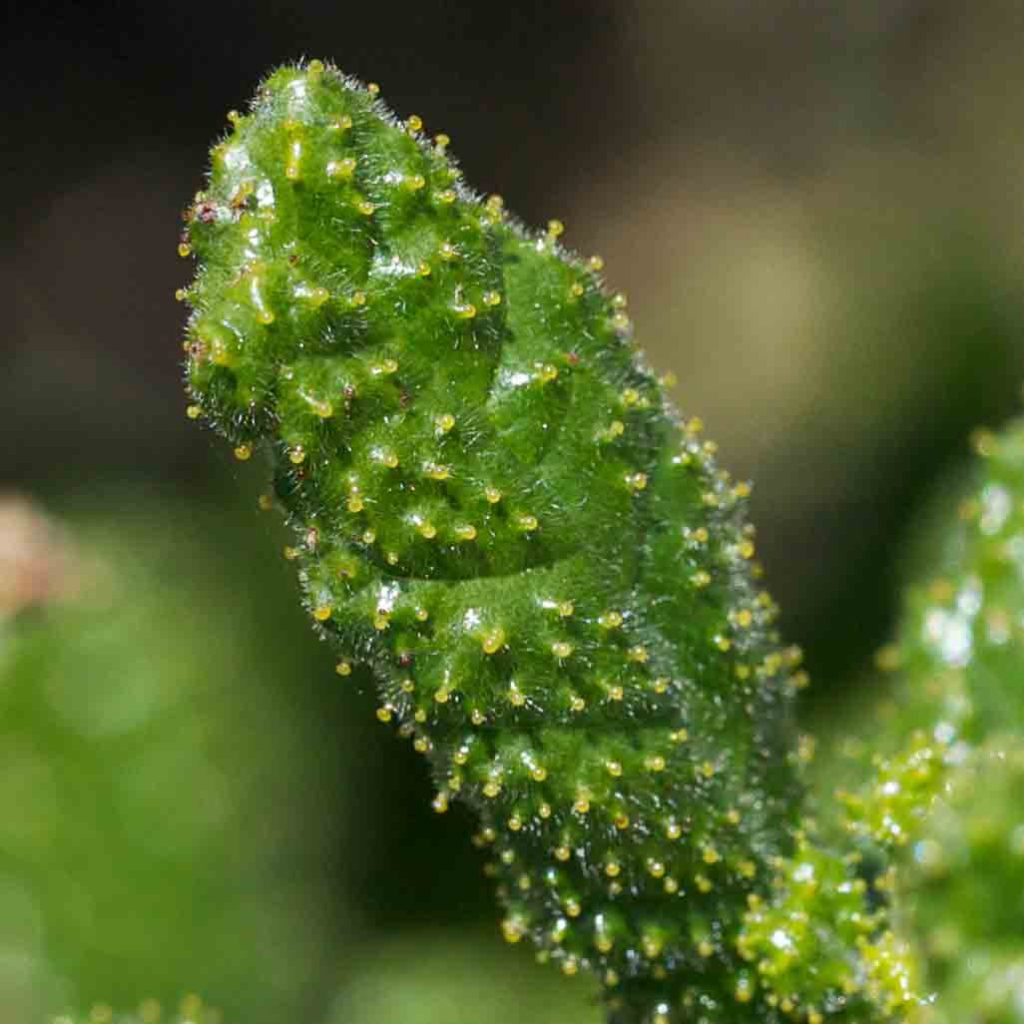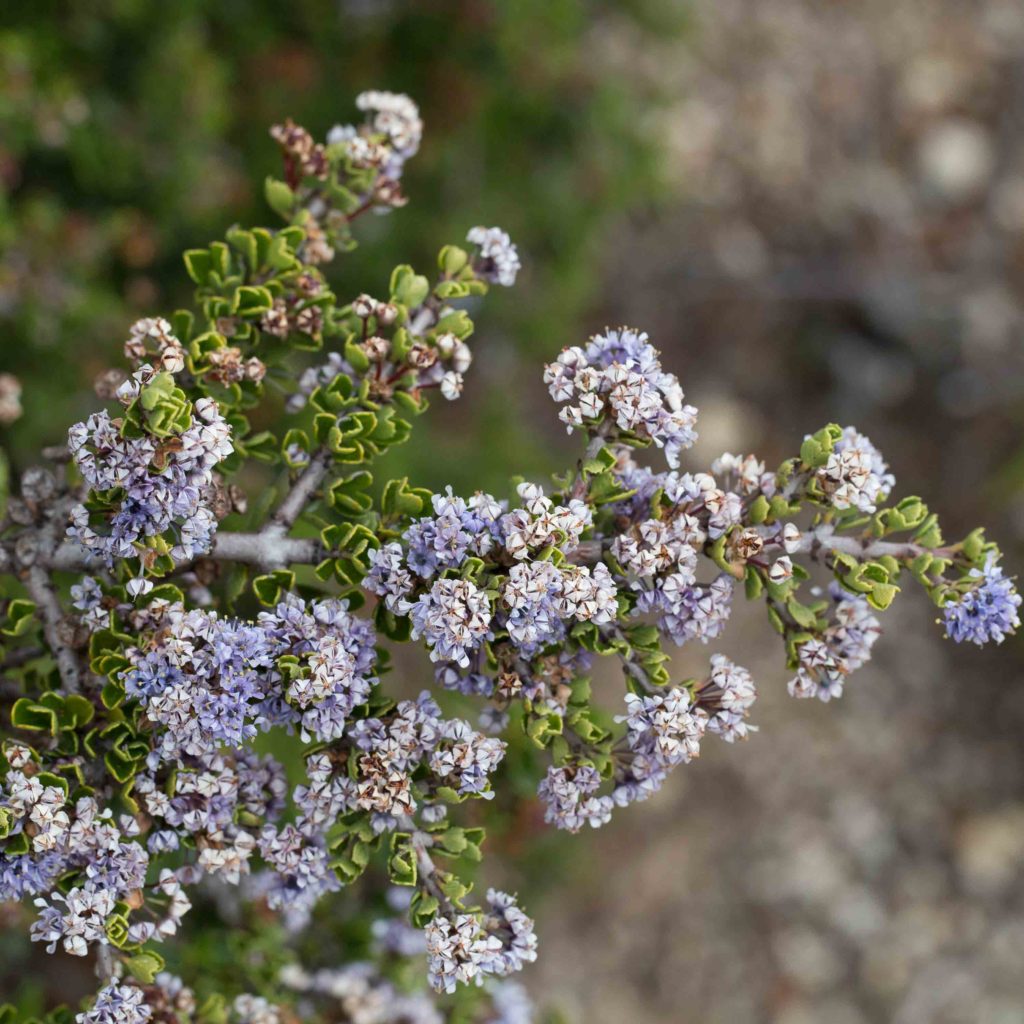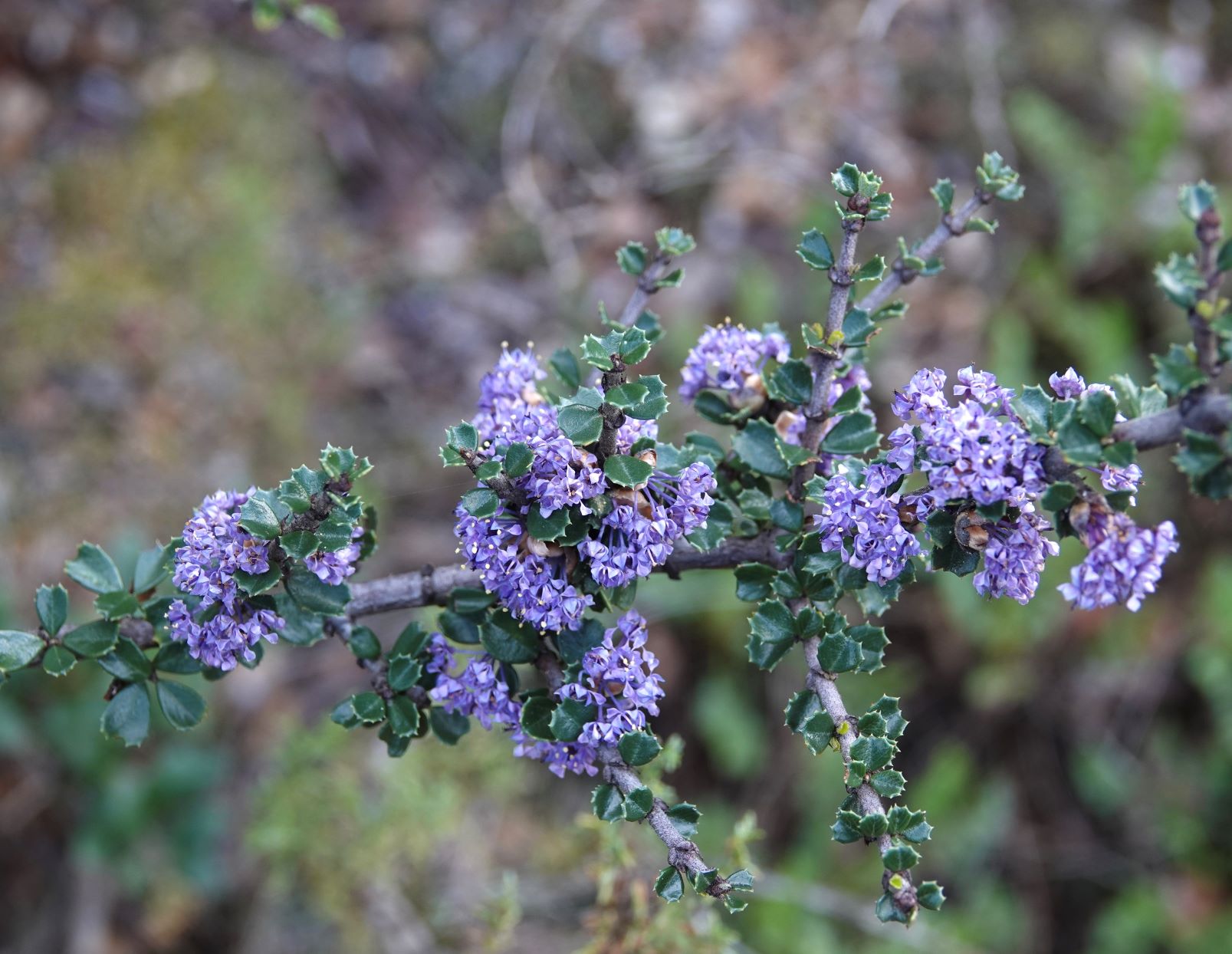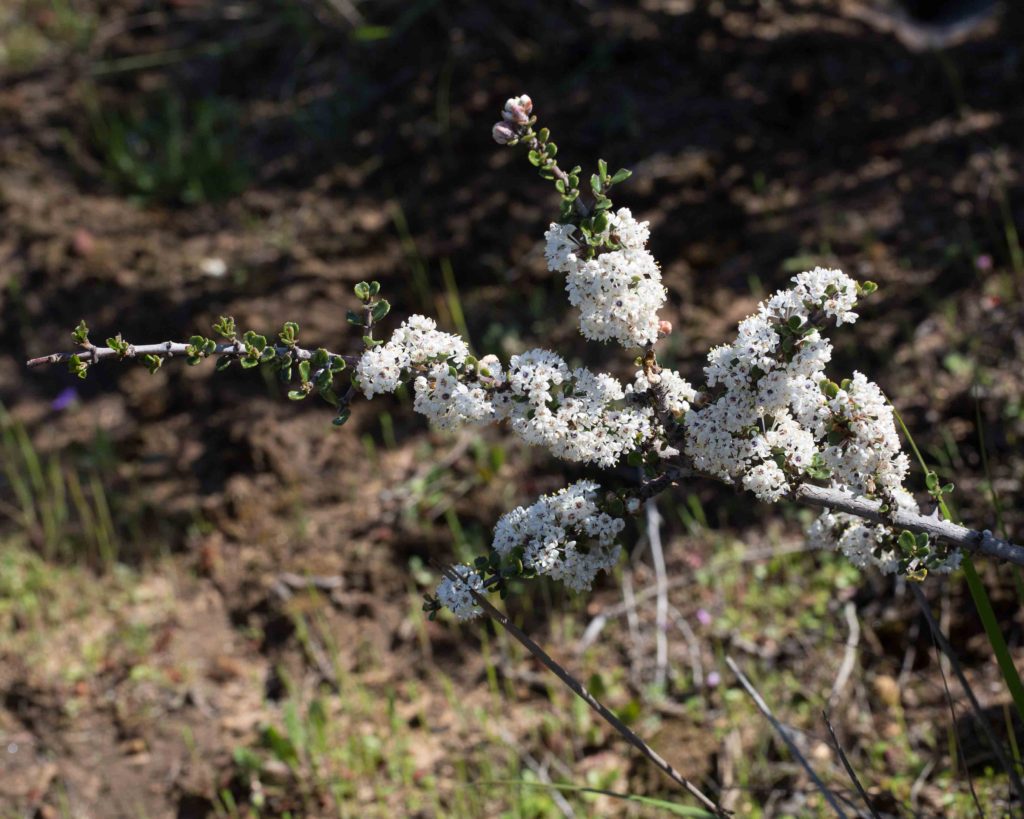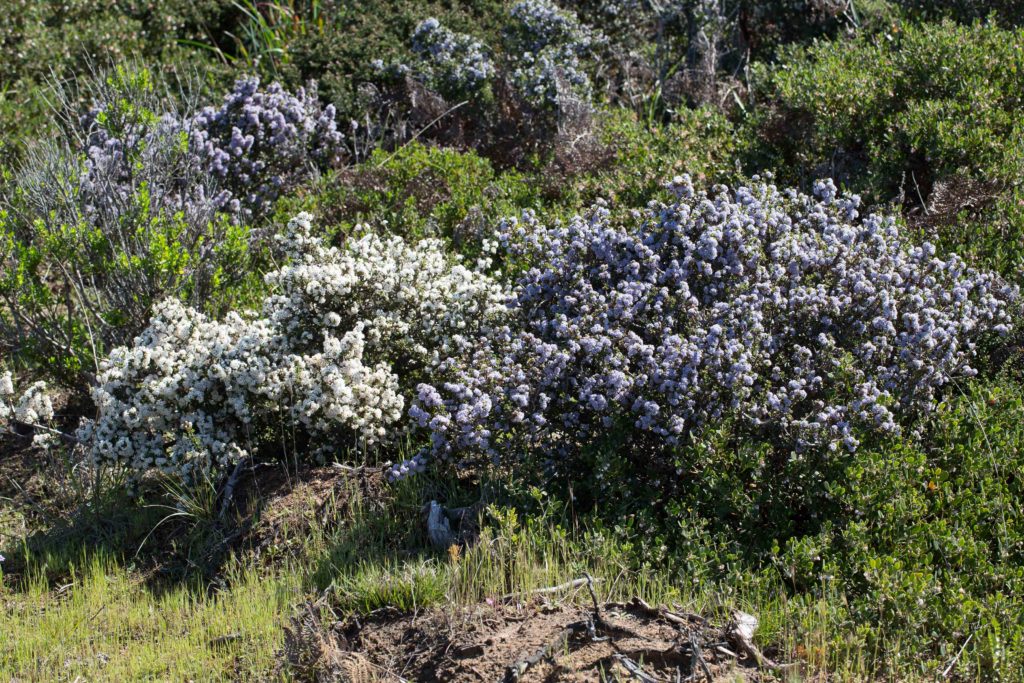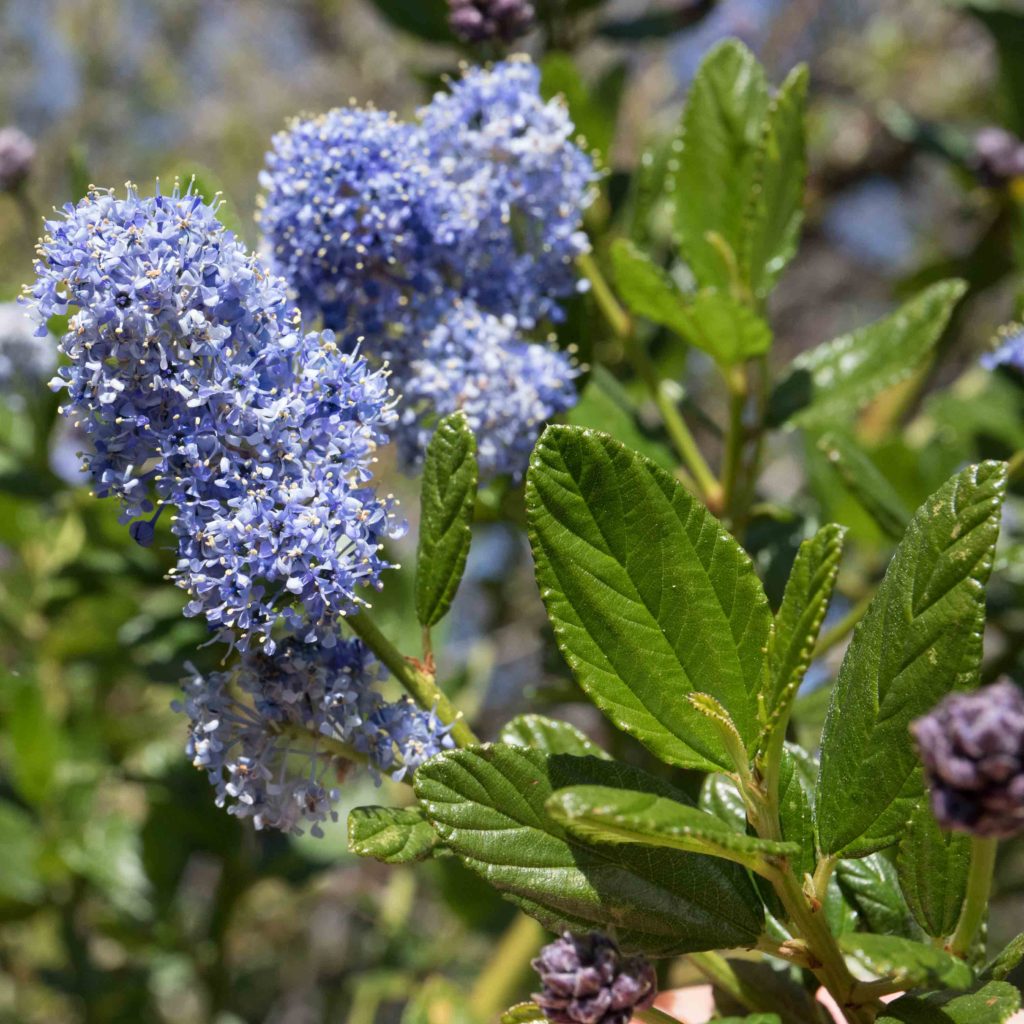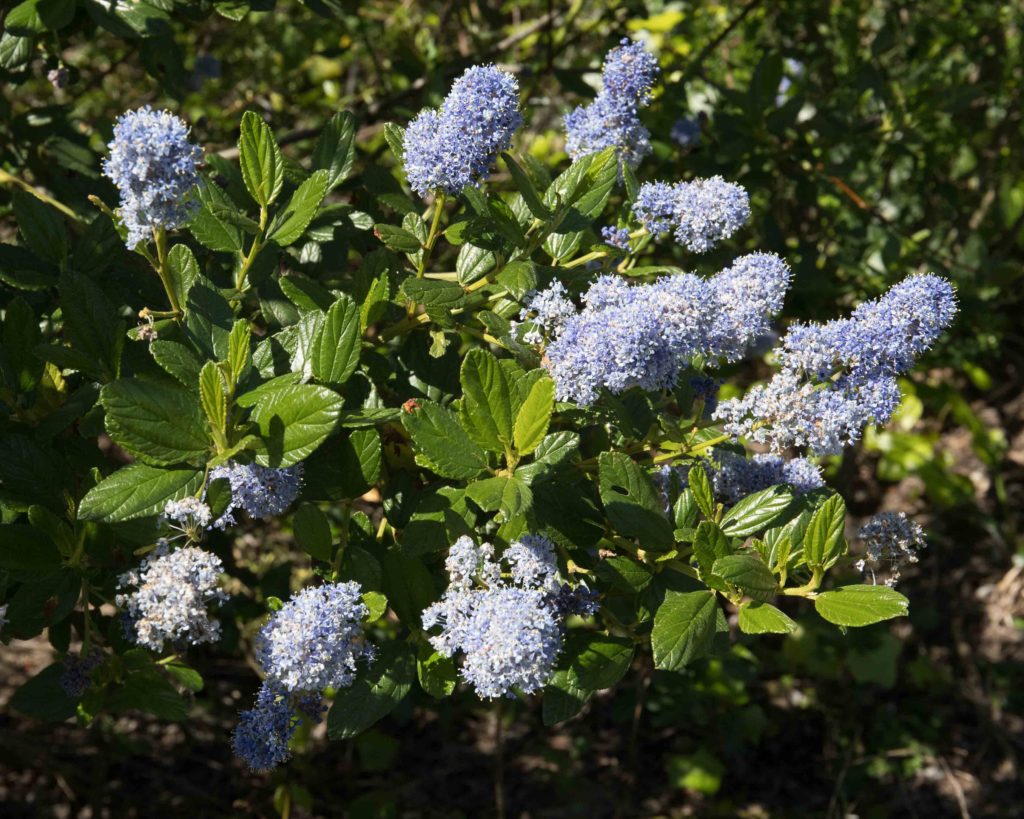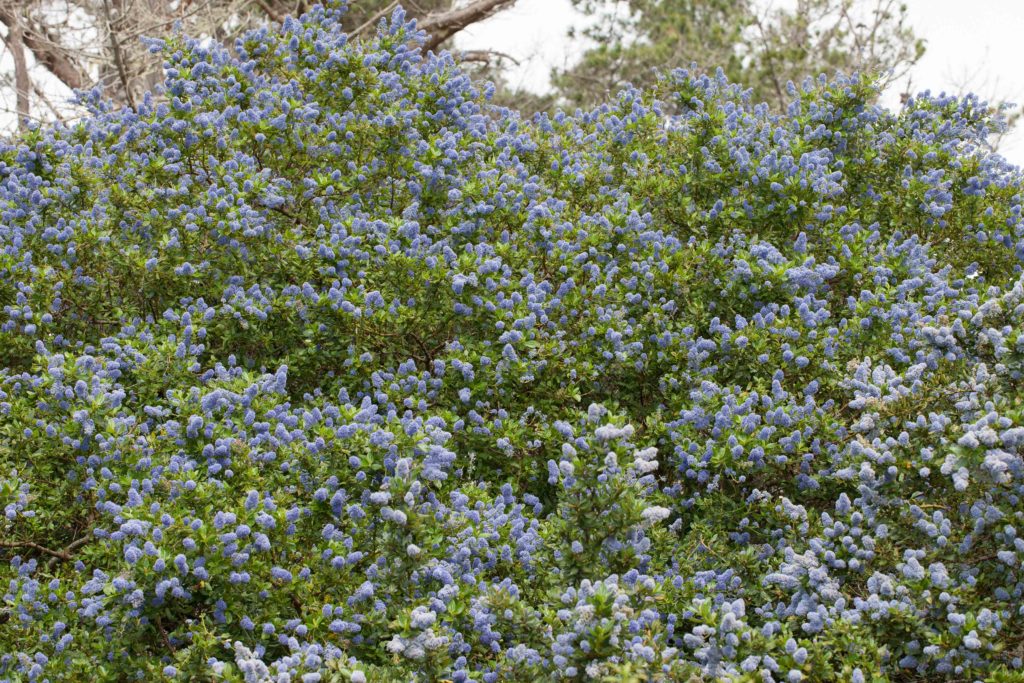Rhamnaceae: Buckthorn Family — Ceanothus
The Buckthorn family is made up of large, woody shrubs with small flowers. Ceanothus flowers are in showy clusters of white or blue.
Buckbrush – Ceanothus cuneatus var. cuneatus
Blooms:
Feb–May
Plant Height:
< 3 m
Flower Size:
Small cluster
Origin:
Native
Habitat:
Sandy to rocky slopes, flats & ridges
Notes:
This is a large, rigid shrub with gray-brown twigs. It has profuse clusters of small flowers, ranging in color from pure white to pale blue or lavender. Leaves are small (6–30 mm), tough, one-veined, oval and opposite. Leaf stipules are knob-like and corky (unlike the thin, scale-like stipules of most Ceanothus).
Dwarf Ceanothus – Ceanothus dentatus
Blooms:
Mar–May
Plant Height:
< 1.5 m
Flower Size:
Small cluster
Origin:
Native
Habitat:
Sandy places, mostly near coast
Notes:
Flowers of this small, densely branched shrub tend to be deep blue. Leaves are < 16 mm long, with one main vein and small, rounded protuberances on their margins. Leaves are often truncated or notched at their tip. Mostly coastal, but also found up to 1500 m in the Outer Coast Ranges. Photos #1 and 3 by CJH.
La Cuesta Ceanothus – Ceanothus foliosus var. medius
Blooms:
Mar–June
Plant Height:
< 2 m
Flower Size:
Large cluster
Origin:
Native
Habitat:
Rocky slopes, chaparral, oak or conifer woodland
Notes:
This shrub has pale blue to purplish flowers in 1–4 cm long panicles. The leaves are distinctive, alternate, 1-veined and minutely toothed. The teeth are typically gland-tipped and folded lengthwise, oblong to widely elliptic or obovate in shape. The leaves are dark green and glabrous above, and sparsely short-hairy below. Leaf stipules are thin and scale-like. Twigs are flexible, not thorn-like. Found in the Santa Lucia Mountains.
Coast Whitethorn – Ceanothus incanus
Blooms:
Mar–June
Plant Height:
< 4 m
Flower Size:
Medium clusters
Origin:
Native
Habitat:
Flats, slopes, chaparral, mixed evergreen forest below 900 m
Notes:
Erect shrub with pale gray or gray-green stems. Twigs are rigid, and may be thornlike. Leaf stipules are scale-like. Leaves 20-60 mm, evergreen, generally oval with 3 main veins and entire margins. Inflorescence is a panicle-like cluster of tiny white flowers. Fort Ord represents the southernmost occurrence of this shrub. It is common in the canyon just north of Sandstone Ridge Road, including one visible along Barloy Canyon Road. Photographs by CJH.
Deer Brush – Ceanothus integerrimus var. macrothyrsus
Blooms:
May–July
Plant Height:
< 4 m
Flower Size:
Large cluster
Origin:
Native
Habitat:
Higher elevations in chaparral, oak or conifer woodland
Notes:
This shrub makes dramatic displays of tiny white to bluish flowers in long, 4–20 cm long panicles. Leaves are alternate, 3-veined and lanceolate to widely ovate. Leaf stipules are thin and scale-like. Twigs are flexible, not thorn-like. Common at higher elevations in the Santa Lucia Mountains. Photo #1 by CJH.
Chaparral Whitethorn – Ceanothus leucodermis
Blooms:
Apr–June
Plant Height:
< 4 m
Flower Size:
Large cluster
Origin:
Native
Habitat:
Dry rocky slopes inland
Notes:
This shrub is most easily recognized by its gray-white, smooth stems and rigid, forked branchlets with thorn-like twigs. The tiny flowers are white, blue or lavender, in 3–15 cm long clusters. Leaves are oval, 10–25 cm, alternate and 3-veined, greenish above and glaucous below. Leaf margins are entire, or with tiny glandular teeth. Leaf stipules are thin and scale-like.
Wartleaf Ceanothus – Ceanothus papillosus
Blooms:
Feb–June
Plant Height:
< 3.5 m
Flower Size:
Small cluster
Origin:
Native
Habitat:
Open or wooded slopes
Notes:
This is similar in appearance to Dwarf Ceanothus (Ceanothus dentatus, see above), with its dark blue flowers and warty, one-veined leaves. It is generally a larger shrub, with slightly larger leaves (11–50 mm long), and it has a longer blooming season. More important, unlike Dwarf Ceanothus, the leaves have protuberances on their face as well as their margin, and their margins are rolled under. Photo #2 by CJH.
Monterey Ceanothus – Ceanothus rigidus
Blooms:
Feb–May
Plant Height:
1.5 m
Flower Size:
Medium cluster
Origin:
Native
Rare or endangered?
Yes – 4.2
Habitat:
Sandy hills or flats near coast
Notes:
This ceanothus has a distinctive growth habit with straight, stiff branches and short branchlets growing laterally. Flowers are pale blue to lavender (occasionally white) and crowded on the lateral branchlets. Leaves are opposite, 1-veined, small (1 cm long) with a wedge-shaped base. The leaf tips are rounded to truncate, with 5–7 sharp teeth on the margin. Photo #2 by CJH.
Blue Blossom – Ceanothus thyrsiflorus var. thyrsiflorus
Blooms:
Mar–June
Plant Height:
< 6 m
Flower Size:
Medium cluster
Origin:
Native
Habitat:
Wooded slopes and canyons
Notes:
This is one of the largest and most common of the Ceanothus. It has dense clusters of complex, very fragrant, soft rich blue flowers. Its alternate, smooth 3-veined leaves are < 4 cm long. Leaf margins are usually not rolled under, or if so just slightly.

